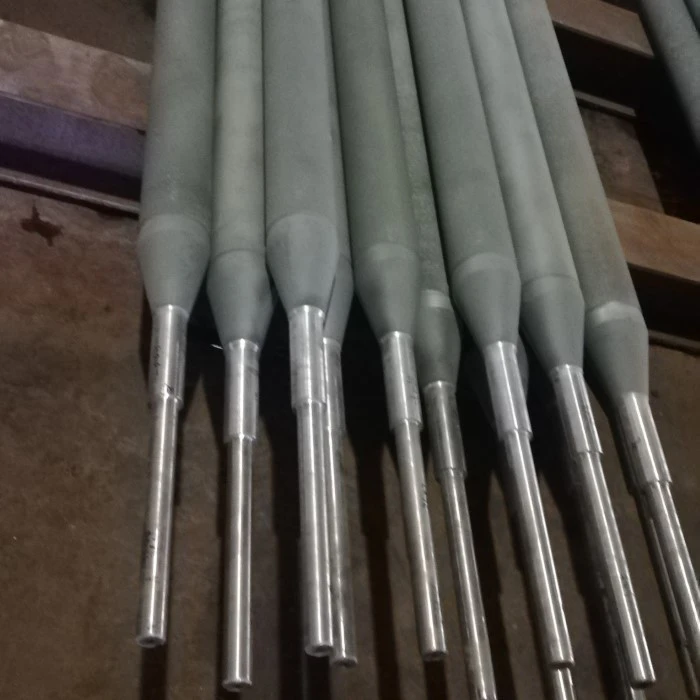The Role of Furnace Rolls in Heat Treatment Processes
Material Support and Transport
Furnace rolls serve as the backbone of material handling within heat treatment furnaces. These cylindrical components are strategically positioned to support and guide materials as they move through various heating zones. The rolls' design allows for smooth, controlled movement, preventing material damage and ensuring consistent heat exposure. This careful balance of support and mobility is crucial for maintaining product integrity throughout the heat treatment process.
Temperature Uniformity and Control
One of the primary functions of furnace rolls is to promote uniform heat distribution. By continuously rotating, these rolls help eliminate hot spots and cold zones within the furnace, ensuring that materials receive consistent heat treatment. This uniformity is essential for achieving desired material properties and maintaining product quality. Advanced furnace roll designs often incorporate internal cooling systems, allowing for precise temperature control and rapid adjustments to meet specific heat treatment requirements.
Durability in Extreme Conditions
Heat treatment processes often involve extreme temperatures and corrosive environments. Furnace rolls are engineered to withstand these harsh conditions, typically constructed from high-temperature alloys or advanced ceramic materials. This exceptional durability translates to extended operational lifespans, reduced maintenance requirements, and fewer production interruptions. The ability of furnace rolls to maintain their structural integrity and performance under extreme conditions is key to ensuring continuous, efficient workflow in heat treatment facilities.
Enhancing Productivity Through Advanced Furnace Roll Technology
Increased Throughput Capacity
Modern furnace rolls are designed to handle higher loads and speeds, significantly increasing the throughput capacity of heat treatment facilities. This enhanced capability allows for processing larger volumes of materials in shorter time frames, directly impacting overall productivity. Advanced roll designs often feature optimized surface textures and coatings that improve grip and reduce friction, enabling faster material transport without compromising stability or heat transfer efficiency.
Improved Energy Efficiency
The latest furnace roll technologies incorporate innovative materials and designs that contribute to improved energy efficiency in heat treatment processes. Rolls with enhanced thermal properties can help reduce heat loss and improve furnace efficiency, leading to lower energy consumption and operational costs. Some advanced rolls even feature internal heat recovery systems, further optimizing energy utilization within the heat treatment facility.
Customization for Specific Applications
Furnace roll manufacturers now offer customized solutions tailored to specific heat treatment applications. This customization can include specialized materials, surface treatments, or geometries designed to meet unique process requirements. By optimizing furnace rolls for particular industries or products, heat treatment facilities can achieve higher levels of efficiency and product quality. This application-specific approach ensures that furnace rolls are perfectly suited to the task at hand, maximizing their contribution to workflow improvement.
Maintenance and Longevity: Maximizing Furnace Roll Performance
Preventive Maintenance Strategies
To ensure optimal performance and longevity of furnace rolls, implementing effective preventive maintenance strategies is crucial. Regular inspections, cleaning, and lubrication of roll bearings and surfaces help prevent premature wear and potential failures. Advanced monitoring techniques, such as thermal imaging and vibration analysis, can detect early signs of roll degradation, allowing for timely interventions. By adopting proactive maintenance approaches, heat treatment facilities can minimize unplanned downtime and maintain consistent workflow efficiency.
Material Selection and Upgrades
The choice of materials for furnace rolls significantly impacts their performance and lifespan. Continuous advancements in metallurgy and ceramics offer opportunities for upgrading existing rolls to more durable and efficient alternatives. Heat treatment facilities should regularly assess their furnace roll materials against the latest available options, considering factors such as thermal resistance, corrosion resistance, and mechanical strength. Upgrading to superior materials can lead to extended roll life, reduced maintenance requirements, and improved overall process efficiency.
Performance Monitoring and Optimization
Implementing comprehensive performance monitoring systems for furnace rolls allows heat treatment facilities to continuously optimize their operations. By tracking key parameters such as roll temperature, rotational speed, and surface condition, operators can identify opportunities for improvement and make data-driven decisions. This ongoing optimization process ensures that furnace rolls consistently contribute to workflow efficiency, adapting to changing production demands and maintaining peak performance over time.
In conclusion, furnace rolls are integral components in enhancing workflow efficiency within heat treatment facilities. Their role in material handling, temperature control, and process optimization makes them indispensable across various industries. By leveraging advanced furnace roll technologies, implementing effective maintenance strategies, and continuously monitoring performance, heat treatment facilities can significantly improve their productivity and product quality. As the demands for precision and efficiency in heat treatment processes continue to grow, the importance of high-quality furnace rolls in maintaining smooth and effective workflows cannot be overstated. For more information on how furnace rolls can improve your heat treatment facility's workflow, please contact us at info@welongpost.com.
References
- Development and characterization of corrosion-resistant plasma-sprayed coatings. Surface and Coatings Technology, 2024.
- Key Materials for Extreme High-Temperature Environments: Ultra-High-Temperature Ceramics and Their Composites. Extreme Materials, 2025.
- Effects of Boron on Microstructure and Mechanical Properties of Fe-6.5 wt.%Si Alloy Fabricated by Directional Solidification. Intermetallics, 2013.
- Strain-Softening Behavior of an Fe-65 wt.%Si Alloy during Warm Deformation and its Applications. Materials Science and Engineering A, 2011.
- Deformation Twinning in an Fe-6.5 wt.% Si Alloy with Columnar Grains during Intermediate Temperature Compression. Materials Science and Engineering A, 2012.
- Tensile Properties of Strip Casting 6.5 wt.% Si Steel at Elevated Temperatures. Materials Science and Engineering A, 2015.




